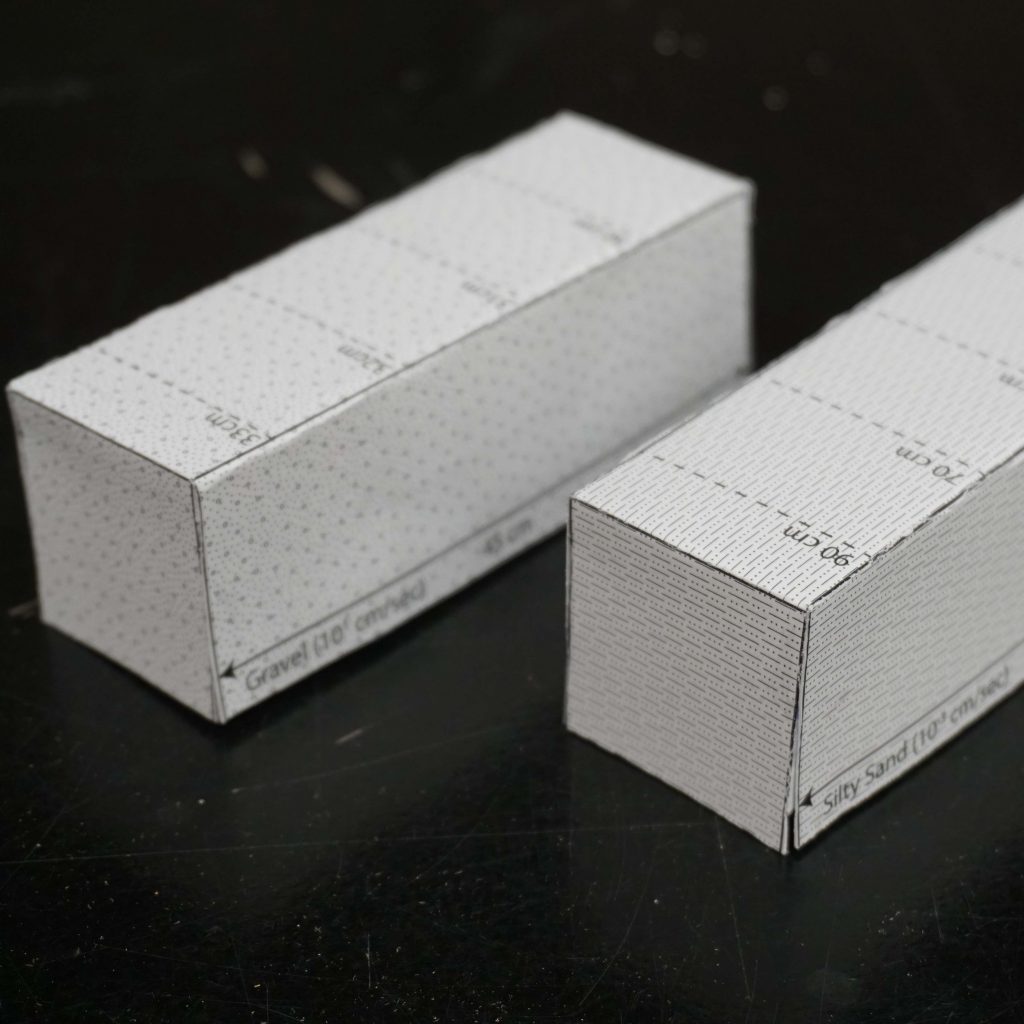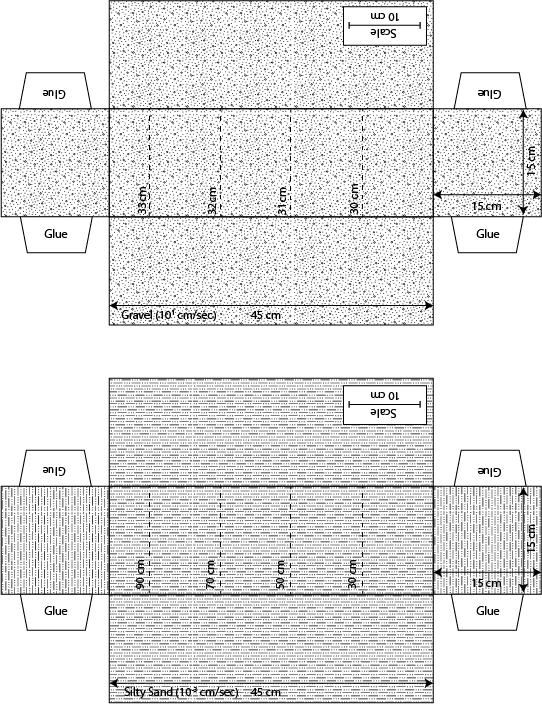
Objectives: To explore the relationship between discharge (Q), specific discharge (q), and average linear velocity (v) in homogenous aquifers.
1. The following problem is based on water flow through two Darcy columns. The first column is filled with a gravel that has a hydraulic conductivity of 101 cm/sec, and the second is filled with silty sand with a hydraulic conductivity of 10-3 cm/sec. The equipotential lines are shown on the top of the models represented as dashed lines with their associated hydraulic heads. Note that each column has a different distribution of equipotential lines. The total length of the columns are 45 cm and a scale bare is shown lower right corner of the back panel of the model. Using these models please answer the following questions.
A. Based on the two Darcy’s columns provided quantify the difference in groundwater discharge [cm3/sec] between the Gravel column and the Silty Sand column.
B. Assuming the gravel column has an effective porosity of 0.30 and the silty sand column has an effective porosity of 0.25. Determine which column has a higher average linear velocity and by how much.
C. Explain which of the following column would make a better aquifer.


This work is licensed under a Creative Commons Attribution-NonCommercial 4.0 International License.
